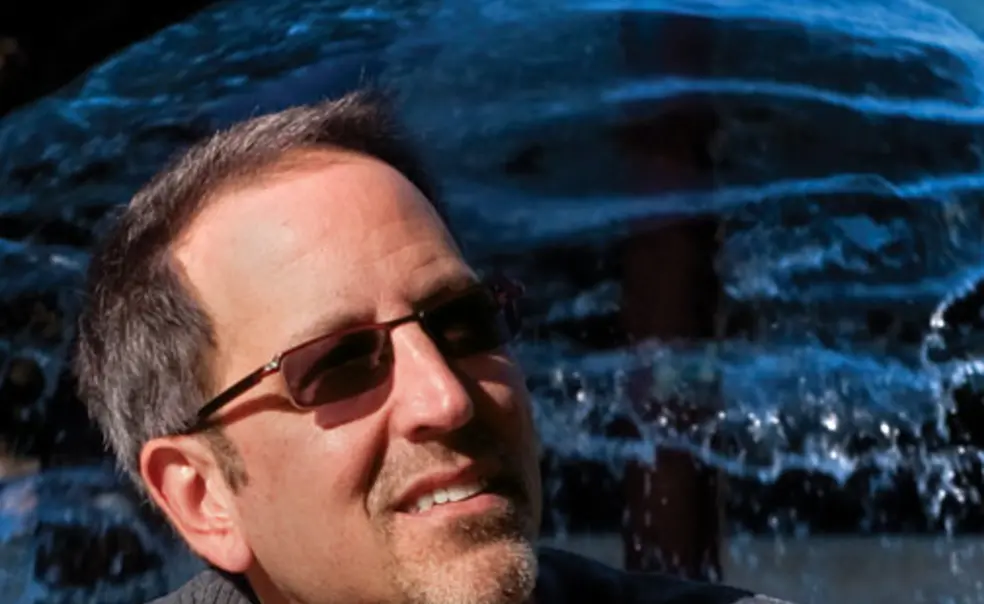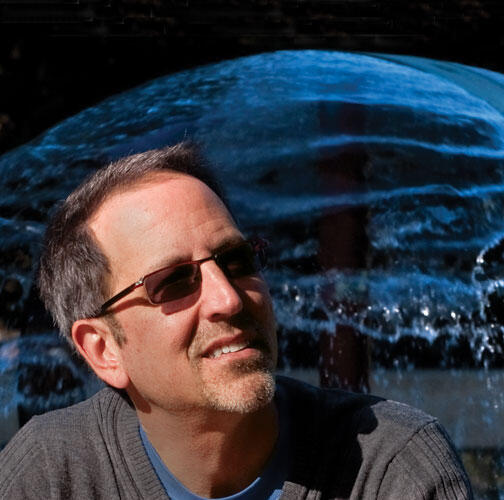Sounding the alarm
Jay Famiglietti *92 sees a future governed by thirst. The world’s underground aquifers, which supply drinking and agricultural water for most people on Earth, are being drained faster than ever before, he says.
The director of the Center for Hydrologic Modeling at the University of California, Irvine, Famiglietti has taken his message on the road. This year, armed with a lectureship sponsored by the Geological Society of America, Famiglietti is barnstorming the world’s universities with a goal of 50 lectures in 50 weeks.
The importance of the message spurs him on. Large swaths of the world — ranging from teeming semi-arid regions of India to the irrigated lettuce fields of California’s Central Valley — rely on water pumped from aquifers: layers of porous rock, deep underground, that hold water. They are pumped as a boundless resource, with little in the way of monitoring or regulation. Famiglietti says many nations must change that way of thinking — or face a future crisis.
“The water won’t be coming back by any natural means. Those regions, because of climate change, are drying out. They won’t be getting as much groundwater refill. And the populations are growing,” he says. “It’s not a pretty picture.”
The technology that has allowed him to paint this picture comes from a NASA mission called GRACE (Gravity Recovery and Climate Experiment). Launched in 2002, GRACE is a pair of satellites that chase each other around the globe in polar orbit, circling the Earth every 90 minutes. When the leading satellite approaches a denser region of the Earth, the extra mass leads to a tiny rise in the tug of gravity. The leading satellite speeds up — momentarily stretching the distance between it and the trailing satellite — until the trailing satellite too “feels” the extra mass and catches up. By precisely measuring the distance between the satellites, researchers build up a gravity map of the Earth that points to regions of greater or less density. “It’s like a giant scale in the sky,” says Famiglietti, who earned his doctorate at Princeton in civil engineering and operations research.
GRACE initially was designed to monitor the changing masses of ice sheets and oceans. But Famiglietti realized it also could be used for groundwater. Water is heavy; just like oceans and ice sheets, layers of subterranean saturated rock are massive. His published work has revealed hot spots — or rather, dry spots — in places like northwestern India, where groundwater is being depleted by 4 centimeters per year. GRACE, he says, offers a comprehensive view that never could be assembled with spotty borehole monitoring efforts.
Famiglietti now is using GRACE to monitor the seasonal ups and downs of ocean levels as rivers and runoff from the land discharge into them. What he’s finding is consistent with global climate change: a more variable cycle dominated by extremes of flood and drought. Not only will those extremes be hard to manage in their own right, but severe, frequent droughts also will make populations more dependent on exploiting the groundwater aquifers that already are being threatened.
Famiglietti is taking his outreach efforts as seriously as his science. He regularly meets with members of Congress to discuss the nation’s water problems. He appears in Last Call at the Oasis, a documentary designed to sound the alarm on the world’s water issues. Famiglietti presses for re-examination of current settlement patterns and agricultural practices that use too much water. “I think the handwriting is on the wall,” he says. “Our water future will be defined by the haves and have nots.”













No responses yet